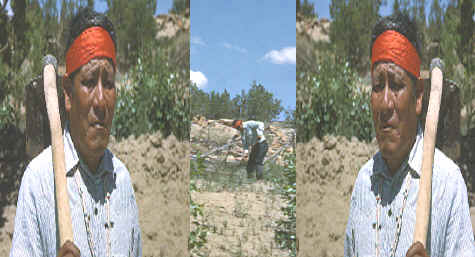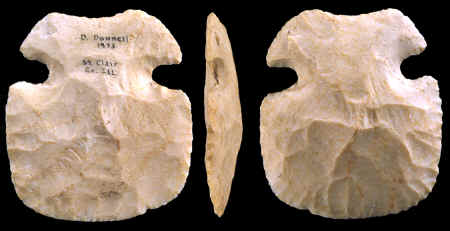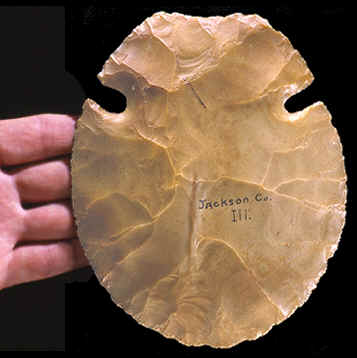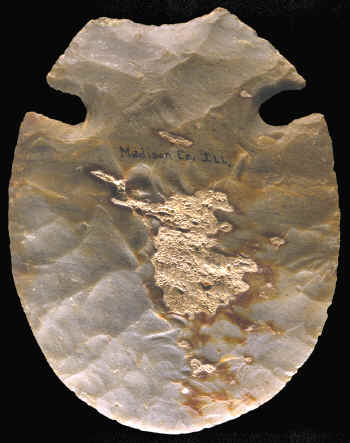|
|
|
St. Clair side-notched hoes date to the Mississippian period. They were made sometime between A.D. 900 to A.D. 1400. |
|
|
A few notched hoes in the Cahokia area were made of Kaolin chert. But the raw material of choice was Mill Creek chert. Mill Creek chert, in its natural form, is found in large tabular shaped pieces and is actually as close to a natural preform that nature could provide. It's no wonder that the majority of all hoes in the Cahokia area were made of Mill Creek chert. |
|
|
The Mill Creek drainage, in southern Illinois, is the sole source area of Mill Creek chert. The quarry area has a very large number of quarry pits and manufacturing stations. Some of these open pits were 40 feet across and approximately 25 feet deep. Evidence like this suggests there must have been a great intensity of production of stone tools during this period. There is also evidence that workman who were quarrying and supplying the finished hoes also lived in small villages in the Mill Creek Valley. |
|
|
Almost all St. Clair side-notched hoes were made from either Kaolin or Mill Creek cherts. Some of the best examples of notched hoes that have been found were made of Kaolin chert but only a small percentage were made of this material. Dr. Howard Winters writes "Hoes manufactured from Kaolin chert are scarce, there being only 80 examples of known provenience in our sample." |
|
| CONTINUE ON TO PAGE THREE | |
|
"REFERENCES" 1895,
Clodd, Edward, "Primitive Man," p. 150. |
|



